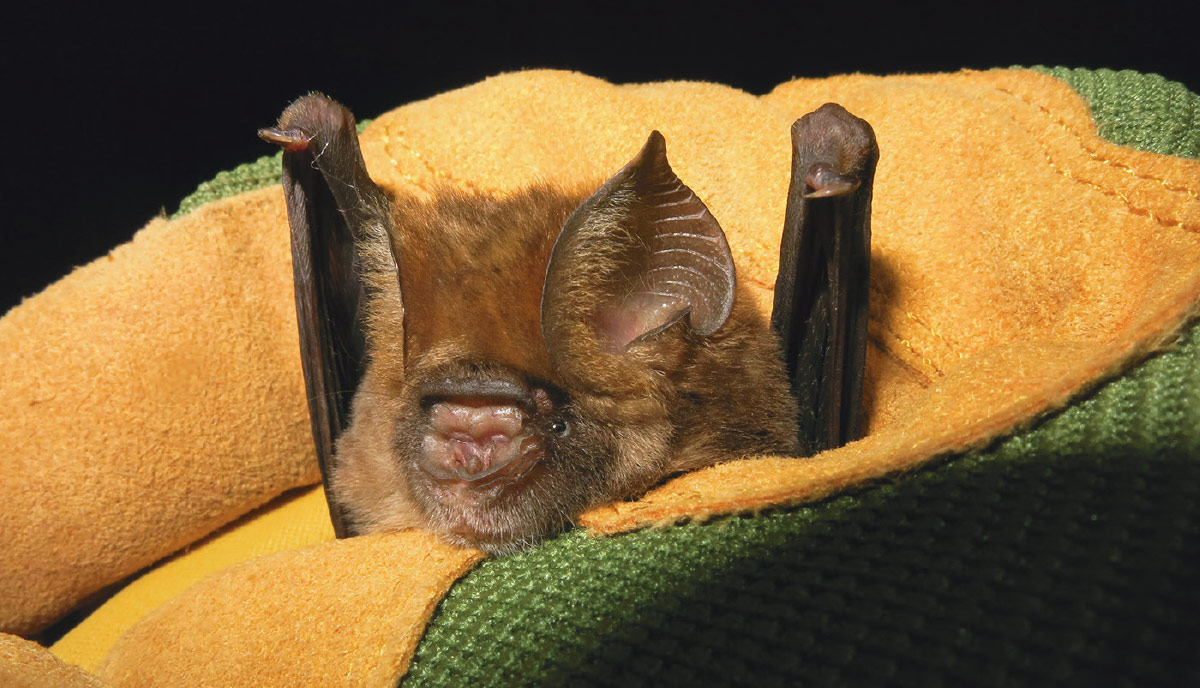

Lamotte’s Roundleaf Bat
n West Africa, the Nimba mountain range rises from the lowlands of Guinea, Liberia, and Côte d’Ivoire (Ivory Coast), with its montane forests reaching an elevation of 5,715 feet at the highest point. Isolated from other mountain ranges and dramatically different from the environments at lower elevations, the Nimba chain of mountains is a hot spot for biodiversity, and it holds exceptional concentrations of endemic species, many of which are severely threatened. The United Nations Educational, Scientific, and Cultural Organization (UNESCO) calls this landscape “an isolated refuge” and “an exceptional site from an ecological perspective.”
As other wildlife groups work to protect other threatened species like the Nimba toad (the only true viviparous frog or toad on Earth) and several types of threatened primates, Bat Conservation International (BCI) works to save a diminishing number of Critically Endangered Lamotte’s roundleaf bats (Hipposideros lamottei) from extinction.

Getting to know Lamotte’s roundleaf bats
Lamotte’s roundleaf bats are endemic to the Nimba mountains and recorded using grasslands, forests, caves, and subterranean mining infrastructure in the high altitudes of the Guinean side of the mountains. Guinea is home to more than 13.5 million people, and many residents burn wood for heat and energy and clear land by setting fires. These practices have likely driven Lamotte’s roundleaf bats to higher altitudes, says Dr. Jon Flanders, BCI’s Director of Endangered Species Interventions.
Based on the available evidence, including the rapid loss of subterranean structures, the International Union for the Conservation of Nature (IUCN) classified the Lamotte’s roundleaf bat as Critically Endangered in 2004.
On his first trip to the region in January 2018, Dr. Flanders and other scientists were able to catch several Lamotte’s bats by erecting harp traps near known roosts.
In subsequent research, BCI began deploying a remote operated vehicle (ROV) to film bat roosts. The robot is a repurposed bomb disposal device with a camera mounted on top, and it is critical to assess and monitor these bats and the status of the underground roosts (many are close to collapsing). During BCI’s most recent research trip, the robot captured footage of several newly born bat pups and helped Dr. Flanders and his team evaluate the health of the bats.
“Many of these adits are on the verge of collapsing, which puts a precarious species in an even more precarious state,” Dr. Flanders says. “They’re far too dangerous for researchers to enter and far too dangerous, for that matter, to trust that they can continue to support this Critically Endangered species long into the future.”
In Guinea, Dr. Flanders works with environmental representatives from regional mining companies who express interest in saving this species. “We’re lucky to have been asked to evaluate the adits and lucky to have their support,” he says. “Partnership is essential. The bats cannot be easily relocated. Our thinking right now is to create similar subterranean features that are substantially stronger with reinforced entrances to give this species a fighting chance.”